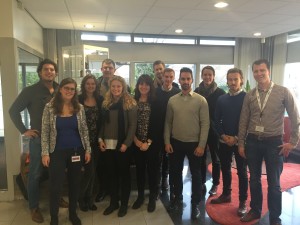Exploring new territories and understanding our surroundings has always been in man’s interest. Throughout history, scientists have mapped the flora and fauna, adventurers have climbed mountains and explored uncharted terrain, while researchers have attempted to explain different phenomenon. This motivation to discover the unknown is also what drives the space industry. However, many wonder if it is worth the more than 300 billion US dollars that are spent on the space industry every year, where about a quarter of the funds come from governmental resources.
Among the arguments used to defend the space industry and prove its necessity, is the dream of being able to establish a human civilization on Mars in the event of a disaster like the one that wiped out the dinosaurs, that it is a peaceful venue for international cooperation, and that it serves as a stimulus for children and youths to enter the field of science and technology. If this is meaningful arguments or not, I leave unsaid, but what can be said is that space research has led to several more or less important discoveries that have benefitted mankind.
The technology behind the infrared ear thermometer is an example of how technology developed in connection with space research has been used in a commercial product. Through the knowledge of how to measure the temperature of stars and planets, NASA could in cooperation with Diatec Corporation develop a handy thermometer that measures temperature by detecting the amount of energy emitted from the eardrum. Also the freeze dried food technology derives from the space industry. During the preparations for the Apollo missions, NASA tried to find a way to reduce the weight of food while the nutritional content stayed the same. By cooking food, rapidly freeze it and then slowly thaw it in a vacuum chamber, it was discovered that it is possible to reduce the weight of the food by 80 percent while 98 percent of the nutrients are preserved.
Also today, the space industry generates technologies that can improve people’s everyday life. Among the new technologies that have been developed but not yet commercialized is for example a speech recognition technology that is based on electromyographic signals, which means that it is possible to interpret what a person is saying even if the person do not generate sound or move the lips. Also, a coating which has been used to prevent dirt, ice and the like on spacecrafts is now available for commercial use. The coating was developed with inspiration from the structure of the lotus leaf and has superhydrophobic properties, which in simple terms means that the surface is self-cleaning.
In summary, it can be noted that the space industry does not only create a potential haven, but also contribute to innovations that make life on earth a little better.
